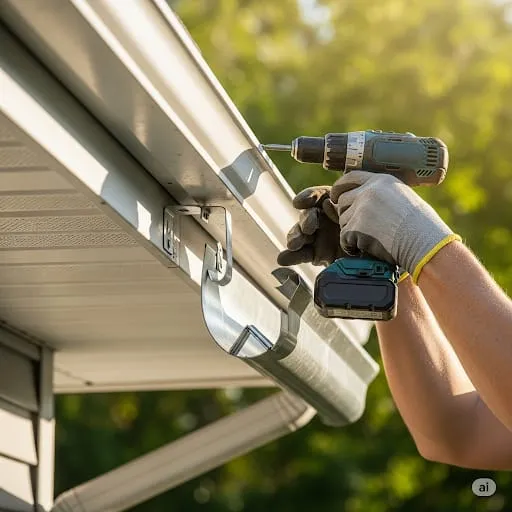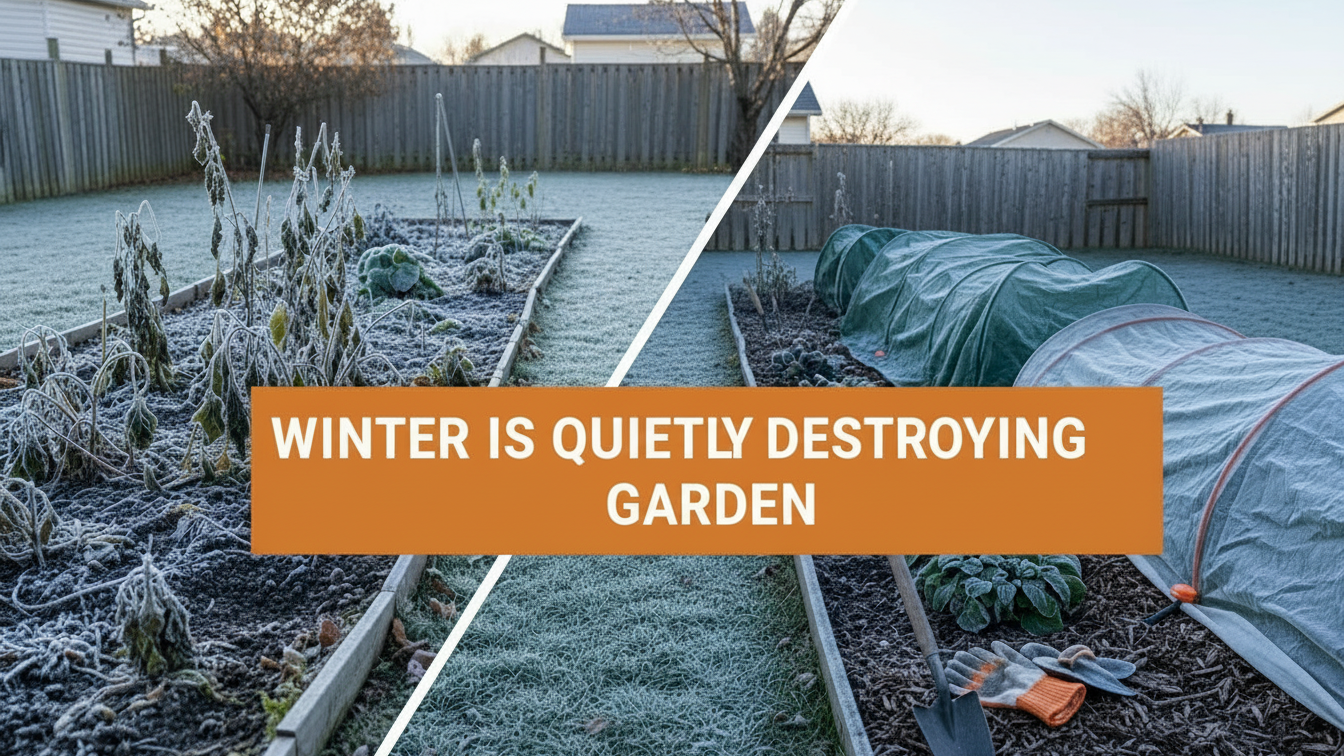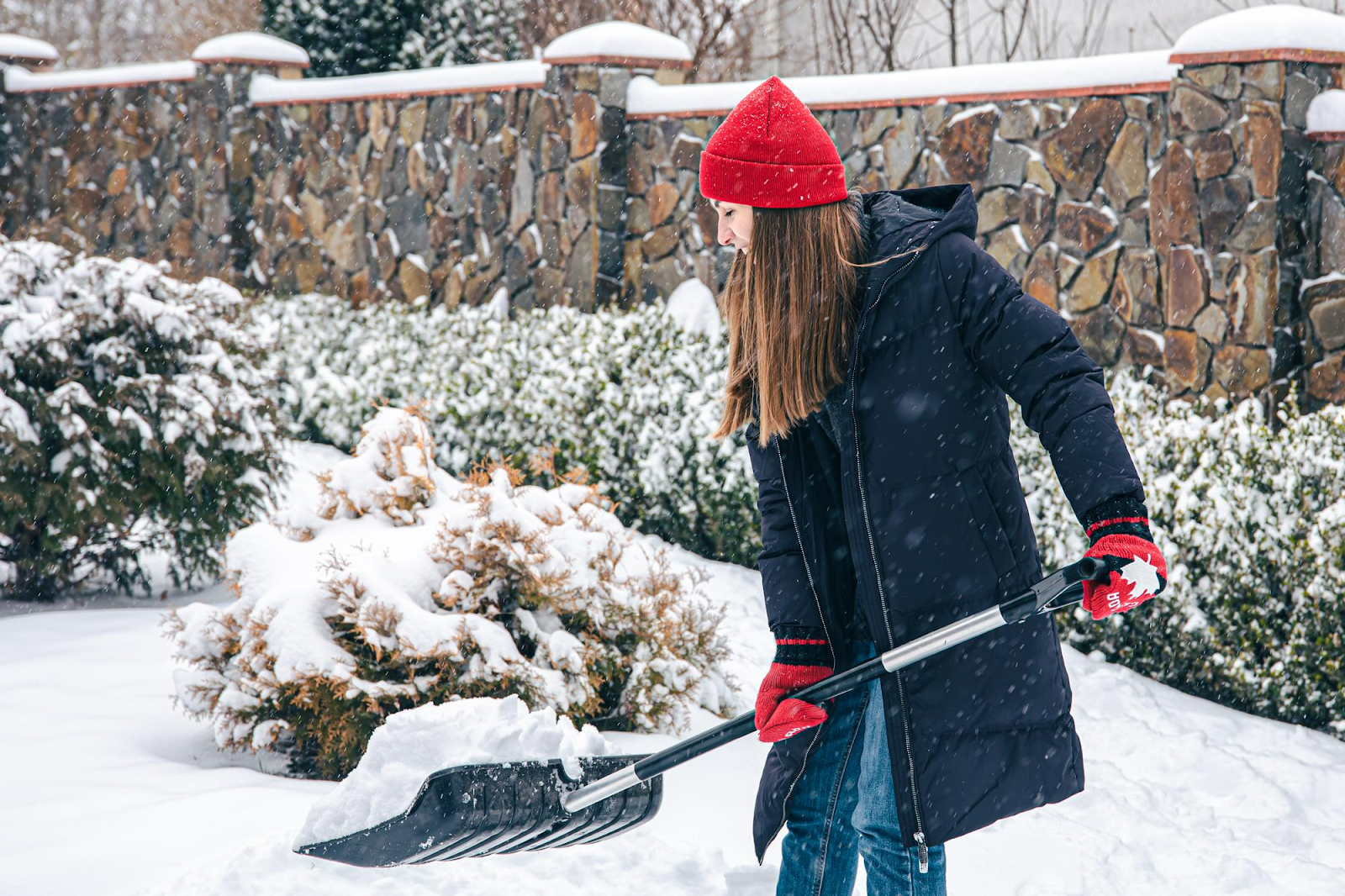The fall on your gutters might seem like a minor detail, but it’s one of those things that can make or break your home’s water management system. Too little slope and you’ll have standing water, or too much slope and your gutters will look like they’re sliding off your house.
Here in Ontario, where there are freeze-thaw cycles that can wreak havoc on improperly installed gutters, getting that slope right protects your home’s foundation, siding, and landscaping from water damage.
Standard Fall Requirements For Ontario Gutters

The standard fall requirement for gutters is a minimum slope of 1/4 inch per 10 feet of gutter run, though many professionals recommend going with 1/2 inch per 10 feet for better performance.
This might not sound like much, but when you’re dealing with a 40-foot section of gutter, that translates to a 2-inch drop from one end to the other. This gentle slope ensures that water flows steadily toward your downspouts without creating a torrent that could cause problems during Ontario’s more intense weather events.
What makes Ontario unique is the climate’s impact on gutter performance throughout the year. During winters, gutters with insufficient fall can develop ice dams where water pools and freezes, creating blockages that force melting snow and ice to back up under your shingles.
Come spring, gutters with proper slope become even more important for handling the sudden influx of water. The recommended fall ensures that even when debris accumulates, water can still flow around these obstructions.
Factors That Influence Gutter Slope
Ontario having diverse zones means that gutter slope requirements can vary depending on your specific location.
Areas that receive heavy snowfall, like those around Georgian Bay or in the Ottawa Valley, often benefit from slightly more aggressive slopes to handle the increased water volume during spring melts.
The type of precipitation we see in Ontario also plays a role in determining optimal gutter slope. During summer storms, gutters with minimal slope might not be able to handle the volume, leading to overflow that defeats the whole purpose of having gutters in the first place. On the other hand, gentle spring rains and fall drizzles need enough slope to keep moving without allowing debris to settle and create blockages over time.
Your home’s specific characteristics also influence the ideal gutter slope. Houses with steep roofs shed water more aggressively, requiring gutters that can handle faster-moving water, while homes with gentler roof slopes might need slightly more gutter slope to compensate for slower water delivery.
Installation Tips And Common Mistakes To Avoid

Getting the gutter slope right starts with proper planning and measurement, and this is where many DIY enthusiasts run into trouble.
The most common mistake we see is homeowners who try to eyeball the slope or use inadequate measuring tools. Professional installers use water levels, laser levels, or high-quality string lines to ensure consistent slope across the entire gutter run. If you’re tackling this as a DIY project, we strongly encourage you to invest in proper measuring tools.
Another frequent mistake is not accounting for the structural realities of houses. Many houses built before the 1980s have settled unevenly over the decades, and what looks like a level roofline might actually have subtle variations that affect gutter installation.
The timing of gutter installation or adjustment also matters more in Ontario than in milder climates. We recommend scheduling gutter work for late spring through early fall, when temperatures are moderate, and you’re not dealing with ice or extreme weather conditions.
But if you notice gutter problems during winter, don’t wait until spring to address them. Temporary fixes might be necessary to prevent water damage, but plan for proper repairs or reinstallation once weather conditions improve.
Getting your gutter slope right might seem like a small detail in the grand scheme of home maintenance. But here in Ontario, where water management can make or break your home’s structural integrity, it’s worth getting it right the first time.





